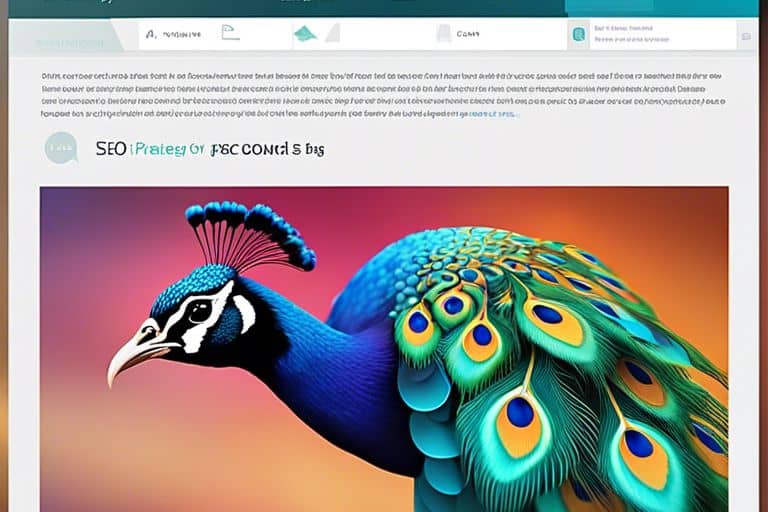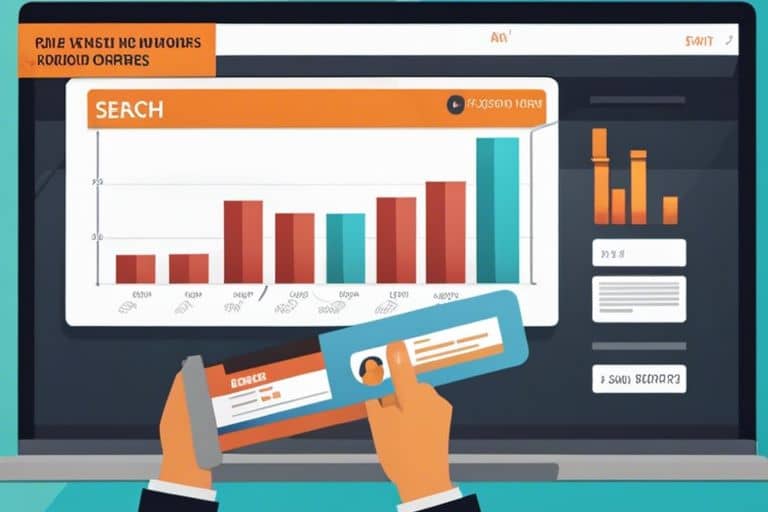The Ultimate Guide To Utilising SEO For Content Marketing Success
In terms of achieving content marketing success in the digital landscape, understanding and implementing SEO strategies is important. This comprehensive guide will equip you with the knowledge and tools needed to optimise your content for search engines, increase visibility, drive organic traffic, and ultimately improve your online presence. By focusing on keyword research, on-page SEO tactics, link building, and analytics, you can propel your content marketing efforts to new heights. Stay ahead of the competition and unlock the full potential of your content with the power of SEO.
Key Takeaways:
- Optimising content with SEO techniques can greatly improve its visibility and reach online.
- Creating high-quality content is vital for SEO success, ensuring that it is both relevant and valuable to the target audience.
- Regularly monitoring and analysing SEO metrics is crucial for adjusting and optimising your content marketing strategy.
Understanding SEO
Pertaining to content marketing, having a solid understanding of SEO is crucial for success. SEO, or Search Engine Optimisation, is the practice of optimising your online content to improve its visibility on search engine results pages. To probe deeper into this topic, check out The Ultimate Guide to Content Marketing Strategy for comprehensive insights.
Types of SEO: On-Page, Off-Page, and Technical
There are three main types of SEO: On-Page SEO, Off-Page SEO, and Technical SEO. On-Page SEO focuses on optimising individual web pages to rank higher and earn more relevant traffic. Off-Page SEO deals with building backlinks and improving the website's reputation. Technical SEO involves optimising the website's infrastructure for search engine crawlers to index and rank the site appropriately. Assume that mastering all three types of SEO is important for a well-rounded digital marketing strategy.
| On-Page SEO | Optimising content, meta tags, headers, and URLs |
| Off-Page SEO | Building backlinks, social media shares, and influencer partnerships |
| Technical SEO | Improving site speed, mobile-friendliness, and site architecture |
| Local SEO | Optimising for local search results and Google My Business |
| Voice SEO | Optimising content for voice search and smart assistants |
Key SEO Factors to Consider for Content
When creating content for your website, certain SEO factors must be taken into account. These include keyword research, high-quality content creation, optimised meta descriptions, internal linking, and mobile responsiveness. Knowing how to implement these factors effectively can significantly boost your organic traffic and search engine rankings.
- Keyword research is crucial for targeting the right audience.
- Creating high-quality content that is valuable and engaging.
- Optimising meta descriptions for higher click-through rates.
- Using internal linking to establish site structure and improve navigation.
- Ensuring mobile responsiveness for a seamless user experience across devices.
Step-by-Step SEO Strategies
| Keyword Research Tips for Targeted Content | Optimizing Your Content for Search Engines |
Keyword Research Tips for Targeted ContentConcerning SEO strategies, keyword research is crucial for creating targeted content. Start by identifying your main keywords and then expand your list by using tools like Google Keyword Planner. Consider long-tail keywords for specific targeting and keep an eye on competitor keywords. Any keyword strategy should focus on relevance, search volume, and competition. |
Optimizing Your Content for Search EnginesOptimising your content for search engines involves more than just incorporating keywords. Make sure your meta tags, titles, and descriptions are optimised for search engines. Create high-quality, relevant content that adds value to your audience. Focus on improving user experience by using proper headings, bullet points, and internal linking. Any content you publish should be unique, engaging, and easily accessible. |
Utilising SEO for Content Marketing
Tips for Boosting Your Content's Visibility
When aiming to boost your content's visibility through SEO, start by conducting keyword research to understand what your audience is searching for. Incorporate these keywords strategically in your content, including in titles, headings, and meta descriptions. Creating high-quality, engaging content that provides value to your audience is imperative for SEO success. Promote your content through social media and consider collaborating with influencers to reach a wider audience. After implementing these strategies, monitor your performance using analytics tools and make adjustments as needed to improve your SEO efforts.
Pros and Cons of SEO Tactics in Content Marketing
| Pros | Cons |
| Increased website traffic | Keyword stuffing penalties |
| Improved search engine rankings | Algorithm changes impacting rankings |
| Enhanced brand visibility | Time-consuming to see results |
| Cost-effective compared to PPC | High competition for popular keywords |
Implementing SEO tactics in content marketing can significantly boost your online presence and drive organic traffic to your website. However, it's crucial to be aware of potential pitfalls such as keyword stuffing penalties and the time-consuming nature of SEO. By carefully balancing the pros and cons, you can develop a successful SEO strategy that aligns with your content marketing goals.
Advanced SEO Techniques
-
Incorporating Structured Data into Your Content Structured Data Benefits Helps search engines understand your content better Improves visibility in search results -
Mobile Optimization and Its Importance Mobile-friendly design Benefits Enhances user experience on mobile devices Boosts website rankings on search engines
Incorporating Structured Data into Your Content
In the context of advanced SEO techniques, incorporating structured data into your content is crucial. By adding markup to your HTML, search engines can better understand the information on your website. This can lead to enhanced visibility in search results, ultimately driving more traffic to your site.
Mobile Optimization and Its Importance
Mobile optimization is a key aspect of SEO as more users are browsing the internet on their mobile devices. Having a mobile-friendly design not only improves the overall user experience but also significantly boosts your website's rankings on search engines. Ignoring mobile optimization can be detrimental to your SEO efforts, as search engines prioritise mobile-friendly websites in their rankings.
Measuring SEO Success
Tools and Metrics for Tracking SEO Performance
Utilising the right tools and metrics is crucial for tracking and evaluating the success of your SEO efforts. Tools like Google Analytics, SEMrush, Ahrefs, and Moz can provide valuable insights into your website's performance, keyword rankings, backlink profile, and more. Metrics such as organic traffic, keyword ranking positions, click-through rates, and conversion rates can help you measure the impact of your SEO strategies and identify areas for improvement.
Analysing and Adapting SEO Strategies
Analysing and adapting your SEO strategies is necessary for staying ahead in the ever-evolving digital landscape. By monitoring performance metrics, identifying trends, and conducting regular audits of your website, you can identify what's working well and what requires improvement. Adapting your strategies based on these findings can help you maintain and improve your search engine rankings, drive more organic traffic, and ultimately achieve SEO success.
The Ultimate Guide To Utilising SEO For Content Marketing Success
In short, mastering the art of SEO for content marketing is crucial for online success. By optimising your content with relevant keywords, creating high-quality and engaging material, and staying up-to-date with SEO trends, you can significantly improve your website's visibility and drive more organic traffic. Remember to focus on creating valuable content that resonates with your target audience and provides solutions to their problems. With a strategic SEO approach, you can propel your content marketing efforts to new heights and achieve long-lasting success in the digital landscape.
FAQ
Q: What is SEO?
A: SEO stands for Search Engine Optimisation. It is the practice of increasing the quantity and quality of traffic to your website through organic search engine results.
Q: Why is SEO important for content marketing?
A: SEO is crucial for content marketing as it helps your content get discovered by your target audience. By optimising your content for search engines, you can improve your visibility, drive more traffic, and ultimately achieve your marketing goals.
Q: How can I utilise SEO for content marketing success?
A: To utilise SEO for content marketing success, you need to identify relevant keywords, create high-quality and engaging content, optimise meta tags, headers, and images, build backlinks from reputable sources, and regularly monitor and adjust your SEO strategy.
Q: What are some common SEO mistakes to avoid in content marketing?
A: Common SEO mistakes to avoid in content marketing include keyword stuffing, neglecting meta descriptions, using duplicate content, ignoring mobile optimisation, and not focusing on user experience.
Q: How long does it take to see results from SEO efforts in content marketing?
A: The time it takes to see results from SEO efforts in content marketing can vary depending on various factors such as the competitiveness of your industry, the quality of your content, and the effectiveness of your SEO strategy. Generally, it can take anywhere from a few weeks to several months to start seeing significant results.















